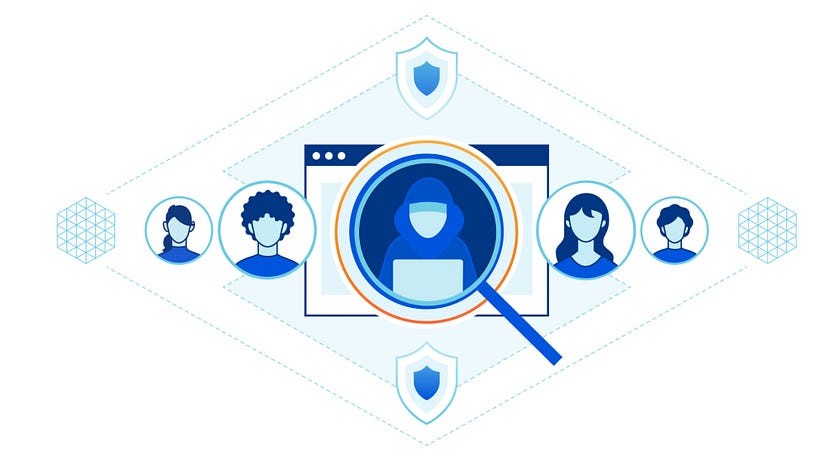Fraud Detection: What is it & How it Works?

In today’s hyper-connected landscape — spanning both personal and professional realms — online fraud and data breaches have emerged as a serious and escalating business threat. The increasing frequency and sophistication of such attacks highlight the urgent need for proactive security measures. According to studies, by 2025, the global cost of cybercrime is projected to soar to $10.5 trillion, growing at an alarming rate of 15% annually.
What once were isolated security breaches have now evolved into large-scale assaults on everyday customer interaction points — contact centers, mobile apps, chat platforms, and digital service portals. Technologies originally intended to enhance customer satisfaction are now being weaponized by fraudsters, turning customer service channels into active battlegrounds.
The Growing Importance of Fraud Detection
As digital fraud becomes more advanced, understanding fraud detection — its purpose, functionality, and available solutions — is critical to protecting businesses and customers alike.
The Customer Service Fraud Paradox
Modern customer service faces a difficult paradox. The very tools designed to enhance the customer experience also introduce new vulnerabilities. Companies today must carefully balance security with convenience, verification with satisfaction, all while navigating a digital landscape where every interaction could be either genuine or malicious.
Fraudsters now impersonate customer service agents, exploiting the empathy and helpfulness expected from these roles. By systematically targeting support channels — phone, chat, email, and social media — they seek to exploit trust, monetizing every point of engagement.
Anatomy of Customer Service Fraud
Fraudsters use a variety of tactics to exploit customer service processes, including:
- Account Takeover Specialists: These attackers study service protocols to identify authentication weaknesses. Through tailored social engineering techniques, they manipulate support agents using detailed knowledge of verification processes.
- Support Channel Manipulators: They exploit gaps between multichannel service operations — leveraging information from one channel (like email) to gain access through another (such as phone or chat).
- Policy Exploiters: Fraudsters abuse customer-friendly policies like returns, warranties, and goodwill gestures for financial gain.
- Identity Synthesizers: These actors create entirely fake customer profiles, complete with fabricated service histories and behaviors, making fraudulent requests appear legitimate.
How Fraud Detection Works in Customer Service
Fraud detection functions as a robust protective shield, enabling businesses to maintain seamless service while securing both customers and systems. It integrates behavioral analysis, real-time risk assessment, and interaction intelligence to stay one step ahead of attackers.
Real-Time Interaction Analysis
Advanced systems monitor all customer interactions in real time:
- Voice Pattern Recognition: Detects stress indicators, scripted speech, or abnormal voice patterns that signal deception.
- Behavioral Consistency Mapping: Tracks cross-channel behavior to detect inconsistencies or impersonation attempts.
- Request Pattern Analysis: Flags irregular request timings or types that could suggest fraudulent motives.
Intelligent Authentication
Dynamic, context-aware authentication strengthens security by assessing the broader relationship and history:
- Historical Interaction Intelligence: Uses long-term behavioral data to set a baseline for normal activity.
- Multi-Channel Correlation: Analyzes behavior across voice, chat, email, and social platforms for a complete customer profile.
- Contextual Risk Scoring: Evaluates each interaction’s risk based on current threats and overall account behavior.
Machine Learning’s Role in Fraud Detection
Machine learning has transformed fraud detection from a reactive defense to proactive protection:
- Supervised Learning Models: Train on historical data to recognize fraud-related patterns.
- Unsupervised Algorithms: Detect anomalies and previously unknown attack methods to provide early warnings.
- Natural Language Processing (NLP): Analyzes communications across channels to identify manipulation, scripted messages, or deceptive language.
The Human Element: Empowering Customer Service Representatives
Technology alone cannot stop fraud. Customer service representatives play a critical role as frontline defenders. They must combine empathy with analytical awareness, trained to detect signs of fraud while still providing support.
Fraud mitigation training empowers agents to:
- Identify and react to social engineering tactics.
- Adjust verification levels based on the assessed risk of each interaction.
- Maintain customer trust while preventing threats.
The Future of Customer Service Fraud Detection
The future of fraud detection lies in AI-driven, predictive, and integrated systems designed to reduce risk without disrupting customer experience:
- Predictive Customer Protection: Identifies at-risk individuals before fraud occurs.
- Conversational AI Security: Embeds real-time fraud detection in bots and virtual assistants.
- Emotional Intelligence Analysis: Assesses emotional cues during interactions for additional fraud signals.
- Cross-Industry Threat Intelligence: Enables shared insights and coordinated defenses across industries.
Building an Impenetrable Defense with [24]7.ai
To stay ahead of evolving threats, businesses must adopt a zero-trust approach — where no user, device, or channel is trusted by default. When combined with zero-fraud principles, this creates a resilient defense framework.
[24]7.ai’s AI-powered omnichannel platform offers this cutting-edge approach. By unifying zero-trust and zero-fraud models, it secures every stage of the customer journey — from first contact to long-term engagement.
Through predictive analytics, intelligent authentication, and real-time fraud monitoring, [24]7.ai empowers organizations to:
- Enhance customer protection
- Safeguard business integrity
- Build and maintain trust
In a time of growing digital risk, complacency is not an option. The organizations that proactively address these challenges will not only survive — but thrive — by turning security into a strategic advantage.


Comments
Post a Comment